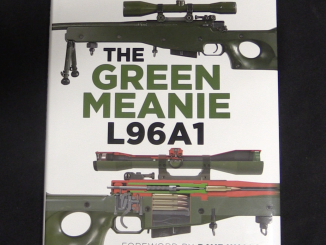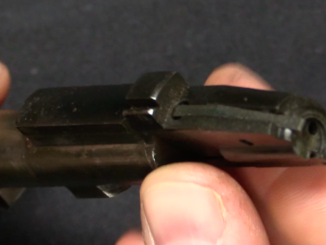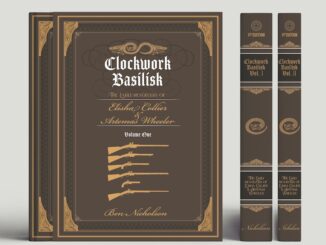George Fosbery was the British officer (Major, at the time of this particular design) responsible for the quite famous Webley-Fosbery self-cocking revolver, as well as the Paradox system for shotgun slugs and many other lesser known firearms inventions. This rifle was his entry into British trials in the late 1860s for a cartridge firing rifle. Ultimately the Martini-Henry would be chosen, but a nine different guns were put through testing including Fosbery’s.
One of the aspects that Fosbery’s design was particularly well suited for was the requirement that the gun be able to be loaded with a minimum amount of movement required that might interfere with men standing in close formation. Despite this, Fosbery only managed to come in 6th place in the trials, and only a small number of his guns were sold on the civilian market afterwards.




Fascinating. It would seem an interesting variation/modification by Maj. Fosberry of the Albin-Braendlin and Hiram Berdan 1st pattern type rifles–a sort of “trapdoor” locked at the point of firing by a lug moving forward into the breech block/bolt. The Remington rolling block is a much more elegant solution, IMO, although Fosberry’s contribution of a single brusque motion to open the action, extract and eject the cartridge is interesting and functional to the design requirements. Perhaps a slight edge over the Snider that it sought to replace, but not enough of one. Comparable, broadly, to the U.S. Peabody, which became the hammerless Martini-Henry design… Also explicates why there was the cocking indicator retained on the hammerless Martini! Great stuff.
I think that the ability to convert existing stockpiles of p53 enfields to the snider action weighed heavily in its favor.
True. The Snider conversion of the P53 Enfield rifle musket was pretty snazzy, even allowing for its manual of arms of rolling the arm over in the hands…At least according to its manual. This Maj. Fosberry has a bit of an edge in economy of motion, although the Martini seems even better.
Of course, Sweden converted Wrede rifle muskets to rolling blocks while obtaining the wherewithal and means to manufacture the rifles and not just buy them from Remington.
North American firearm cognoscenti sometimes disparage the “false economy” of upgrading/converting existing stands of arms due to the U.S. history of the Trapdoor Allin-conversions leading to the Trapdoor Springfield and its dogged retention into the 1890s… As late as 1916 when the Seattle, WA PD needed extra firepower, the coppers could avail themselves of Indian War surplus Trapdoor .45/70s!
Here, there is no danger of a ruptured cartridge exploding the breech into your face. Thank goodness that massive striker acts as the locking piece too. Just like the “snuff box” actions (like the Snider-Enfield and the French Tabatiere) and the Trapdoor Springfield family, the “hammer” must be cocked back to unlock the action and permit the breech to open. Of course, the Dreyse and the Chassepot also needed to have their strikers pulled back to unlock their bolts. Am I wrong on anything?
Of course the Dreyse and Chassepot used combustible paper cartridges instead of metallic cartridges:
https://www.youtube.com/watch?v=S5xH1YELizY
Our lad Ian: https://www.youtube.com/watch?v=S5xH1YELizY
https://www.youtube.com/watch?v=-QtrHC4L_8A
https://www.youtube.com/watch?v=Xi47hIRi3b0
Sometimes I find myself fancying the paper-cartridge Sharps rifle for comparative purposes and availability… Maybe some day!
Interesting design. I didn’t realize the Major came up with the Paradox system; a clever and useful innovation.